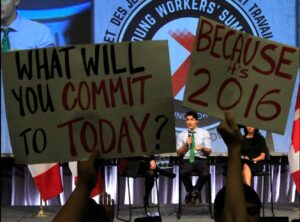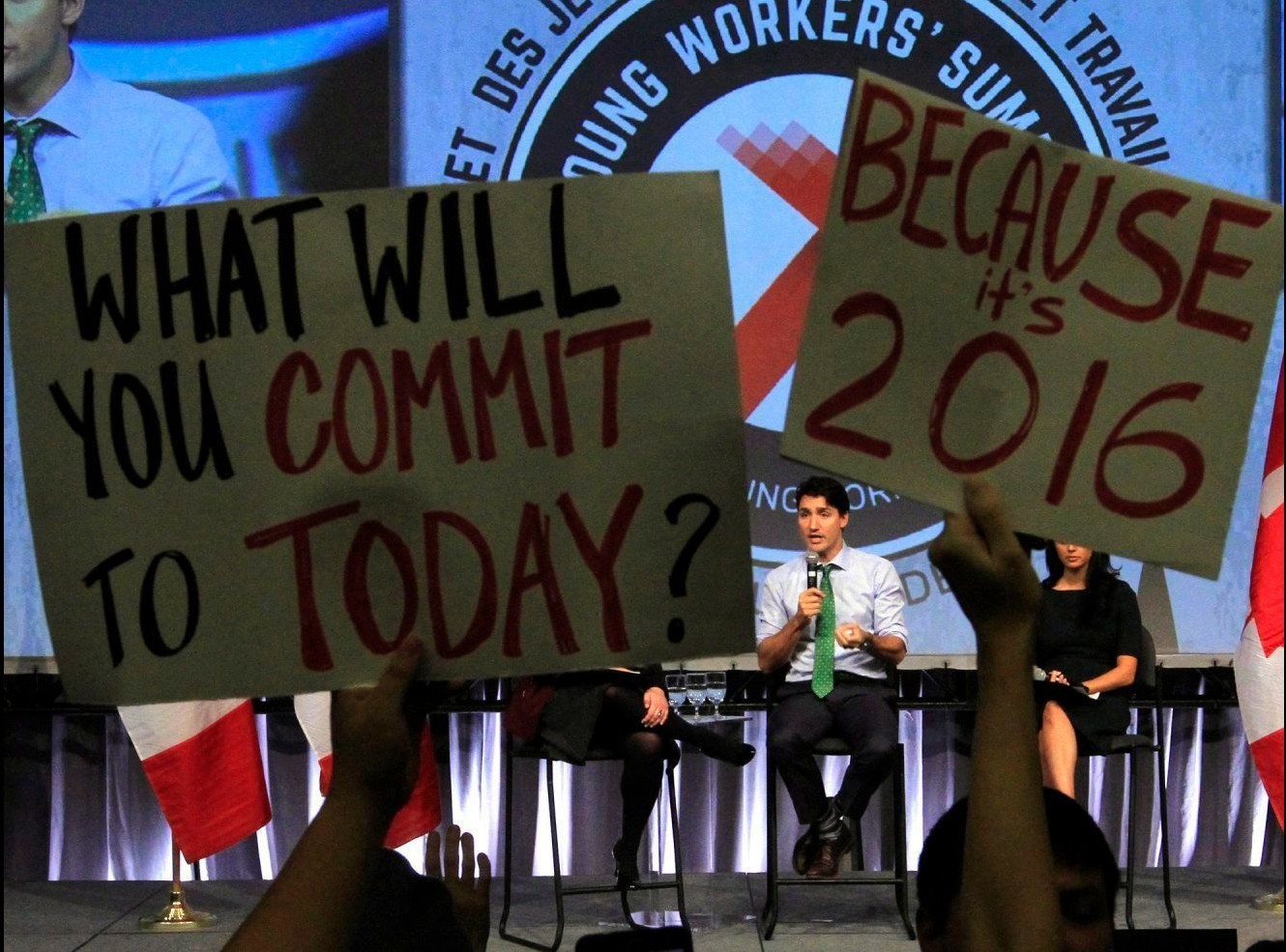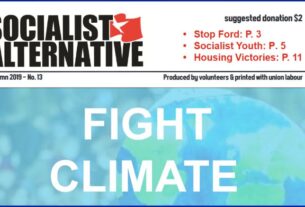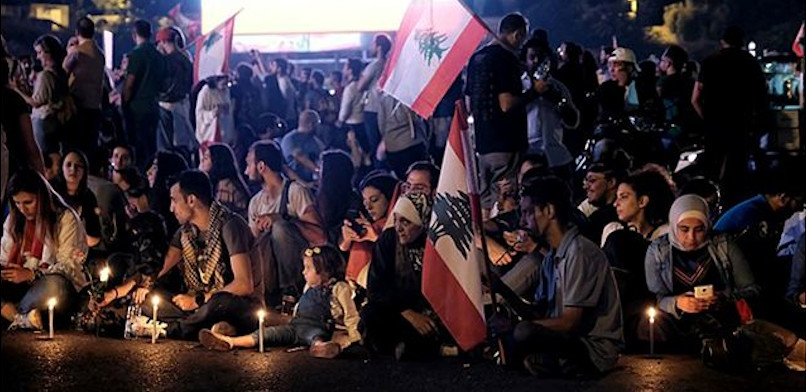 Justin Trudeau took power in October 2016 adopting the mantra of sunny ways. After more than a year, how has he done? If he was a figure skater his performance might score high on style, but considerably lower on content/substance. Or as a young friend put it, “The smile is a change from before but what has he done that is different?”
Justin Trudeau took power in October 2016 adopting the mantra of sunny ways. After more than a year, how has he done? If he was a figure skater his performance might score high on style, but considerably lower on content/substance. Or as a young friend put it, “The smile is a change from before but what has he done that is different?”
On many fronts, Trudeau and the Liberals are continuing Harpers’ policies including federal cuts to health spending and going ahead with the Harper negotiated, $15 billion export of weapons to Saudi Arabia, even though it has one of the worst records for women’s rights in the world (remember “Because it is 2015”) and is bombing Yemen to smithereens.
Continuing from Harper
CETA
The Liberals pushed hard to force the European Union to agree the Canada-Europe Trade Agreement (CETA), negotiated in secret by Harper’s team. It was little Wallonia (a region of Belgium) that opposed the proposed investor-state dispute settlement rule which allows companies to seek damages if local regulations interfere with their economic expectations. CETA would ban government policies to buy local, add billions to the cost of pharmaceuticals for public health and increase pressures to privatize water, transit and energy. CETA is not a done deal, as there is powerful opposition across Europe.
Climate change continues
The Liberals have talked about tackling global warming and a national carbon price. Yet in practice, which is what matters, Trudeau’s government has approved more environmentally damaging and climate change causing projects than Harper. These include expanding two pipelines from the tar sands: Kinder Morgan to Vancouver and Enbridge to Lake Superior, US. They approved two LNG plants in BC: Woodfibre near Squamish and Petronas near Prince Rupert. The Liberals also agreed the Site C dam in the Peace River Valley.
All this while global warming increases. 2016 was the hottest year on record. The arctic is unstable with record low ice levels and warm temperatures, 30oC above average during December! The permafrost is melting, risking widespread release of methane, a powerful greenhouse gas. Both the ice melt and methane release will accelerate global warming.
In response, the Liberals justify these projects claiming that, “the environment and the economy go hand in hand.” Yet most of these projects provide very few jobs and risk destroying thousands of jobs in farming, fishing and tourism.
First Nations
Trudeau promised “a renewed, nation-to-nation relationship with Indigenous Peoples, based on recognition, rights, respect, co-operation, and partnership.” While they have announced increased funding for on-reserve education and some infrastructure, their environmental actions have enraged First Nations with widespread opposition to all the projects.
Workers
Trudeau claimed to be worker friendly, writing an open letter to public servants saying that, “I have a fundamentally different view than Stephen Harper of our public service. Where he sees an adversary, I see a partner.” Yet in recent negotiations with the main federal employees union, PSAC, Ottawa simply repeated the proposals of Harper’s team.
The Liberals refuse to introduce a federal $15 minimum wage that would benefit nearly a million workers and set a benchmark for the provinces. The previous Liberal government abolished the federal minimum wage.
They promised “a fair and balanced approach to organized labour.” Yet they blocked legislation that would ban the use of replacement workers (scabs) during a dispute. Such laws exist in BC and Quebec.
Canada Post
The Liberals promised that they would “save home delivery” and review the Harper attacks on Canada Post. They did not remove the Harper appointed CEO, Chopra. They did not support the postal union in last year’s negotiations. The review panel that Trudeau appointed backed all of Chopra’s attacks on Canada Post, including a likely move to two-tier pensions and partial privatization.
The Liberal-dominated House of Commons committee only recommended restoration of home delivery to 350,000 out of the 830,000 households that lost that service since 2014.
Both the review panel and parliamentary committee opposed the idea of re-establishing post office banking (abandoned in 1968) which works well in many countries. The Liberals’ banking friends on Bay Street do not want competition, particularly in rural areas.
Economy and living standards
The Liberals promised, “real help to Canada’s middle class and all those working hard to join it.” So far, what has happened?
“2016 has been an economic bust. [Between] November, 2015 to November, 2016, we lost 30,000 full-time jobs; the proportion of part-time jobs jumped from 18.7% to 19.7%; and the unemployment rate would have risen if the number of Canadians seeking work had not fallen,” stated economist Andrew Jackson.
Workers’ living standards are stuck with average weekly earnings rising in 2016 by 1.1%, while inflation is 1.6%. Growth for 2016 is only 1.2%. Outside of the construction sector, business investment has been dismal and exports are flat “meaning that growth essentially came from the continuing housing boom and consumer spending based on rising debt.”
While there may be small increase in federal stimulus, this will be cancelled out by the provincial cuts. Jackson notes, “the contribution of government spending to growth will increase a little bit in 2017 [but] not enough to put much of a dent in unemployment and underemployment and stagnant wage growth.”
Low paid workers can expect their precarious lifestyles to continue.
What is Different? – Infrastructure and Privatization
The Liberals’ promise to boost the economy and improve society through much needed public investment in infrastructure was central to their victory. Nowhere did the Liberals say this would be a privatization bonanza.
The $81 billion investment in infrastructure over the next 10 years, through a new Canadian Infrastructure Bank, involves two privatization schemes.
Capital will be raised by recycling assets, selling off all or some of the 8 public airports and 18 public ports. Handing them over to private companies will increase costs to users, mean poorer services and no community involvement.
Much of the construction will be Public Private Partnerships (P3s), where the public sector carries most of the pain of costs and risks, and the private sector gets the gain. P3 projects are notorious for cost over-runs and cutting corners on quality. Ontario’s Auditor-General stated that Brampton’s P3 hospital cost $200 million more than if done in the public sector.
Behind the infrastructure investment is a huge gift to profits, going even further than Harper on privatization.
Opposition
The votes of young and Indigenous people were crucial to the Liberals’ victory. Increasingly both feel tricked. The leader of BC’s First Nations, Grand Chief Stewart Phillip, said that that the Site C approval is “an absolute betrayal.” Young people have been vocal and angry at recent stop Kinder Morgan demos. The Canadian Labour Congress Young Workers’ Summit saw a clear expression of anger at Trudeau.
The Liberals’ public support has dropped to around 45%, still enough for a comfortable majority. A big help is the opposition in parliament is a mess. The Tories are in the midst of a leadership election battle, with some candidates moving to right wing social policies. Mulcair is set to lead the NDP for more than another year after the membership voted him out.
However, the battles of Indigenous peoples, youth and workers on jobs, pay, pipelines and more will test the Liberals. These are the key struggles and will shape Canadian politics.



